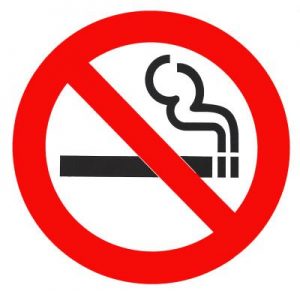CASAA Funded Study Proves Chemicals in E-Cigarettes Pose Minimal Risk
Over the years, electronic cigarettes have been included in smoking bans in various parts of the world because of worries regarding the presumed negative effects chemicals in the vapor might have on users and bystanders. So far, there had been little research done into the chemistry of e-cigarettes, and the few prior studies were either completely ignored, or their findings exaggerated in the name of slanderous propaganda. The Consumer Advocates for Smoke-free Alternatives (CASAA) acknowledged the need of an independent expert review and asked Professor Igor Burstyn, of the Drexel University School of Public Health, to conduct extensive research on the matter. The results of the study confirm that the chemicals in electronic cigarettes pose minimal risks to both users and bystanders.
 In 2009 the Food and Drug Administration announced that “a laboratory analysis of electronic cigarette samples has found that they contain carcinogens (including nitrosamines) and toxic chemicals such as diethylene glycol, an ingredient used in antifreeze“. Several more recent studies have confirmed that the levels of nitrosamines and other known hazardous substances in e-cigarettes are under the danger threshold and comparable to the levels found in medicinal anti-smoking products. Still, almost every e-cigarette article posted on reputed media outlets seems to only mention the finding of the FDA. The only way to combat this propaganda is to solid scientific research, so the CASAA, an all-volunteer, donation-funded organization, approached Professor Igor Burstyn and asked him to provide some much needed answers about the chemicals in electronic cigarettes and the health risks they pose.
In 2009 the Food and Drug Administration announced that “a laboratory analysis of electronic cigarette samples has found that they contain carcinogens (including nitrosamines) and toxic chemicals such as diethylene glycol, an ingredient used in antifreeze“. Several more recent studies have confirmed that the levels of nitrosamines and other known hazardous substances in e-cigarettes are under the danger threshold and comparable to the levels found in medicinal anti-smoking products. Still, almost every e-cigarette article posted on reputed media outlets seems to only mention the finding of the FDA. The only way to combat this propaganda is to solid scientific research, so the CASAA, an all-volunteer, donation-funded organization, approached Professor Igor Burstyn and asked him to provide some much needed answers about the chemicals in electronic cigarettes and the health risks they pose.
The study is very technical, but according to a CASAA press release “By reviewing over 9,000 observations about the chemistry of the vapor and the liquid in e-cigarettes, Dr. Burstyn was able to determine that the levels of contaminants e-cigarette users are exposed to are insignificant, far below levels that would pose any health risk. Additionally, there is no health risk to bystanders. Proposals to ban e-cigarettes in places where smoking is banned have been based on concern there is a potential risk to bystanders, but the study shows there is no concern.” This is something a lot of vapers and e-cigarette supporters have speculated for a while, but now we have conclusive evidence that we can present to state representatives and even the FDA in order to support our cause. There has been a call for ‘regulatory science’ by the FDA. This is exactly the type of science that is needed to make good regulation and informed individual decisions: it summarizes all of the available knowledge and puts the numbers in a useful perspective,” CASAA Scientific Director, Carl V. Phillips said about the study.
“It has always been clear that e-cigarettes were much lower risk than smoking, but there was uncertainty about whether continuing to inhale a mix of chemicals posed a measurable risk,” Phillips said. “Even those of us who have long encouraged smokers to switch are a bit surprised that even the worst-case-scenario risks are so low. This study assures us that e-cigarettes are as low risk as other smoke-free tobacco and nicotine products, like smokeless tobacco and NRT. All of these products are about 99% less harmful than smoking, and so smokers who switch to them gain basically the same health benefits as if they quit tobacco and nicotine entirely.”
There have been many claims that formaldehyde, acrolein, nitrosamines, metals, and ethylene glycol found in e-cigarette vapor poses a health hazard, but according to the findings of Professor Burstyn these are found only at trivial levels that pose no health concern. The study does caution that e-cigarette users inhale large quantities of the main ingredients of e-liquid, propylene glycol and vegetable glycerin. They are considered safe for consumption, and there is no reason to believe this might have a negative effect on our health, but the truth of the matter is there has never before been a situation where millions of people had such a high level of exposure to these substances. Dr, Burstyn simply suggests ongoing monitoring to confirm that there is no risk.
Original study: Peering through the mist: What does the chemistry of contaminants in electronic cigarettes tell us about health risks?
Sources: CASAA, Anti-THR Lies
















